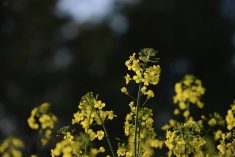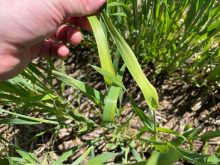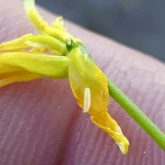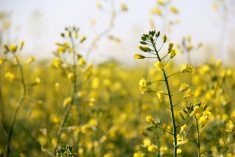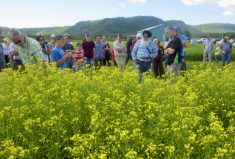Winter canola was the top yielder in the 2021 Canola Challenge, with the highest-yielding field producing just over 5,100 pounds per acre.
The Canola Challenge is an annual competition held by the Ontario Canola Growers Association (OCGA). New to the challenge this year was the separation of spring and winter canola into their own categories, with the top three growers of each crop recognized.
Why it matters: Canola is a high value crop that could help diversify Ontario crop rotations, especially when it is fall seeded.
Read Also
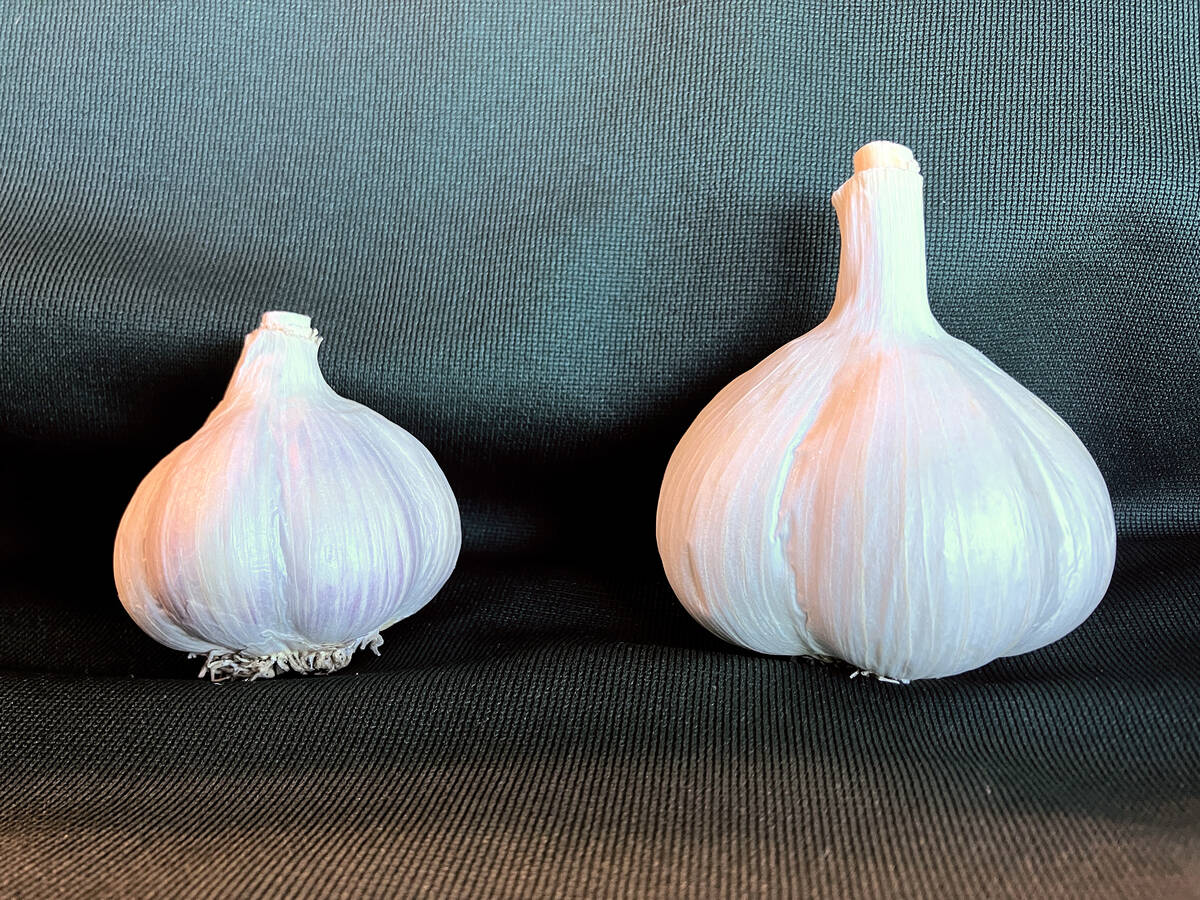
Clean seed garlic promises bigger bulbs and higher returns for growers
Ontario garlic trials show clean seed outshines conventional yields, with stronger drought resilience, reduced virus risk and greater economic outcomes.
The challenge previously listed the top six yielders overall regardless of canola type grown.
Meghan Moran, canola and edible bean specialist with the Ontario Ministry of Agriculture, Food and Rural Affairs (OMAFRA), said although very high yields can be achieved with spring canola, yield potential for winter canola is a little higher so “it makes sense to separate them out.”
The results of the challenge were announced at the Jan. 27 OCGA annual meeting. In her 2021 seasonal summary for the OCGA, Moran wrote that yield reports received by OMAFRA were well above 3,300 pounds per acre, with most between 3,300 and 3,750 lb. per acre. Mid-July was the average harvest date.
The 2021 Winter and Spring Canola challenge winners are:
Winter canola
(All winners grew the Mercedes variety):
- 1st – Shawn and Emily Helmuth of Moorefield, with a yield of 5,133 lb./acre.
- 2nd – Ian Toll of Blenheim, with a yield of 4,122 lb./acre.
- 3rd – Harold and Wilma Fisher of Harriston, with a yield of 3,878 lb./acre.
Spring canola:
- 1st – JR McLaughlin of Palmerston, with a yield of 4,221 lb./acre. Variety: InVigor L255 PC
- 2nd – Peter Wiegert of Brampton, with a yield of 3,729 lb./acre. Variety: InVigor L345PC
- 3rd – John Wiley of Meaford, with a yield of 3,712 lb./acre. Variety: InVigor 357
Moran said the top winter canola growers, Shawn and Emily Helmuth, really “knocked it out the park” with their yield.
She visited the winning field in spring and said she was pretty sure it would be the winner.
A long, open fall helped early establishment and the crop came out of winter looking good, with few losses, she said. She noted some slug damage in the fall but tillage addressed it and losses were not significant.
Moran wrote in her seasonal summary for the Ontario Canola Growers in November that growers in Wellington County (where the Helmuth farm is located) had higher yields. They were spared the hail, wind and pounding rains that occurred in other areas between pre-harvest herbicide application and harvest. This reduced shatter losses.
She also said crops in southern counties started bolting and flowering early due to an early spring, and some got hit with late frost that stressed the plants and resulted in fewer flower buds. Wellington county didn’t have spring temperatures until May, which prevented early flowering and the plants had more buds overall.
Fertile soils key
Emily Helmuth attributed their high yields to lots of manure, lots of fertilizer and good soil condition, “and some good luck [with timely rains], just dumb luck, and lots of fertility.”
She said they applied boron ahead of planting. No insecticide was used in fall or summer. In hindsight she said they should have sprayed for cabbage seedpod weevils.
Moran said she heard from growers that cabbage seedpod weevil came in later than growers normally like to treat it because it can lead to shatter losses.
While no herbicides were used, Helmuth said they struggled with volunteer wheat.
JR McLaughlin of Palmerston won the spring canola challenge and his agronomist, Jeff Jacques of Harriston Agromart, spoke about the management of McLaughlin’s crop.
Jacques said the spring was dry and it got hot early, “and when the canola was trying to flower I thought we were in for major insect pressure, and it didn’t materialize.”
He said growing high yielding canola isn’t much different from growing another crop on a good field.
“If you put canola on a marginal field, you’re going to get a marginal crop.”
McLaughlin’s field that won the challenge is Harrison loam, said Jacques, and has “beautiful soil. There’s actually an open gravel pit adjacent to it, so it’s beautiful soil, overtop of gravel, with extremely good drainage.”
Moran said winners of the yield challenge often have better soil fertility through the application of manure.
Winter canola acreage rising
Spring canola is still the dominant canola crop in Ontario, with just over 31,000 acres insured by Agricorp in 2021. However, winter canola acres have been steadily increasing.
Approximately 4,800 acres were planted in 2020, and OMAFRA estimates that nearly 10,000 acres were planted in fall 2021.
Most of it is grown in Chatham-Kent and Essex counties, followed by Wellington County. Lower acreages are grown in the Grey, Bruce, Huron, Lambton, Prince Edward and Haldimand counties.






